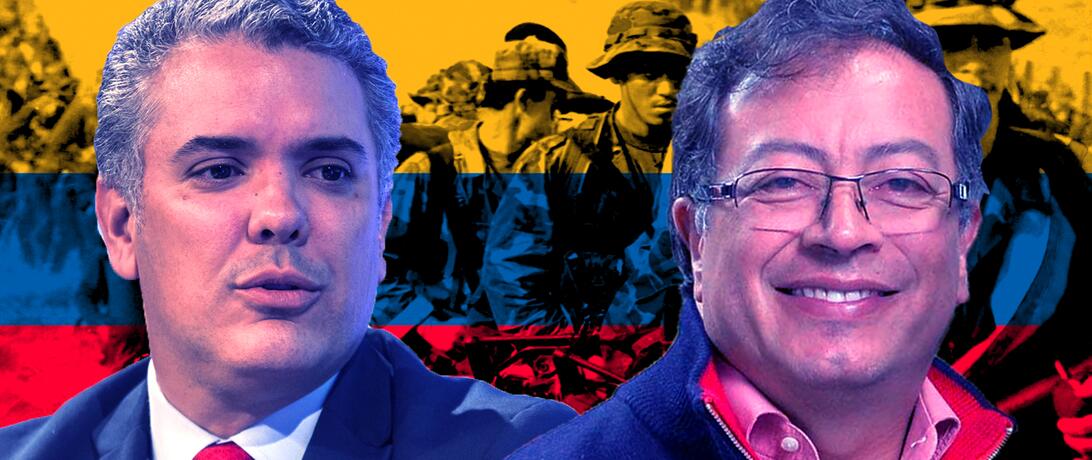
Columbian election impacts the reintegration of ex-combatants and the ability of civil society to welcome ex-combatants to the conversation
The outcome of the presidential elections on June 17 in Colombia, we examined the vulnerability of post-violence elections, the role cities play in conflict, and the impact of the 2018 elections on Colombia’s peace.
A point we have not yet addressed is the extent to which elections also impact the reintegration of ex-combatants and the ability of civil society to welcome ex-combatants to the conversation. The two candidates who headed toward the June 17 final vote run the risk of keeping the country divided over the peace agreement, as strongly demonstrated in the October 2016 referendum, where the agreement was defeated by a small margin.
Right-wing candidate Iván Duque demands more justice for victims, claiming the peace deal is too lenient on the former rebels of the FARC, which has since kept its acronym but is now an officially registered political party. On the left side of the political spectrum sits Gustavo Petro, who stated he will honor the peace agreement and enforce reforms for a more equitable Colombia that will benefit the poor and marginalized but most likely upset the wealthy and militias.
Essentially, the candidates represent two camps of supporters who have been divided politically, socially, economically, and culturally for decades. While Duque purports to stand up for the victims of the conflict, he equally embodies the wealth and power of Colombia’s socioeconomic elites. Duque’s background and political affiliation stand in sharp contrast to what Gustavo Petro’s support base might call the root causes of inequality and violence in Colombia.
However, it would be too simplistic to boil down the complexity of Colombia’s past and current problems to two opposing camps. After all, many victims of the conflict—especially women and indigenous populations—came to Havana during the peace negotiations to ensure both that the negotiations would continue and that the voices of the victims would be included in the agreement. But the support for Duque demonstrates that the victims are not a monolithic group and that leaders’ political aspirations prey on their vulnerabilities.
Arguably, the victims’ disappointment with the glacial implementation of the agreement by the Santos administration should not be directed against the FARC. However, Duque has done well to jump on the bandwagon of focusing on the crimes of the FARC rather than acknowledging that the government has been equally complicit in a lot of crimes against civilians in the past.
The outcome of the presidential elections are one of many tests that will determine the former FARC rebels’ ability to reintegrate in Colombia, especially the ability of Colombian society to accept the former fighters back into civilian life. With the completion of the disarmament phase in June last year and the de facto demobilization of its fighting force, the hardest component of a three-pronged process commonly known as disarmament, demobilization, and reintegration is slowly moving forward toward social and economic reintegration. Adding political reintegration to the pot creates a recipe that can be altered, and, depending on which ingredient (social, economic, or political) is measured at a higher dose, it might give peace a bitter taste for ex-combatants and civilians alike.
In other words, economic reintegration will enable former rebels to join the Colombian workforce and thereby contribute to overall economic growth. But unless political and social obstacles are addressed and an atmosphere is created in which former rebels can open up about their past without fear of retaliation and job loss, the divides in Colombian society might grow and the wounds might fester.
Past experiences of ex-combatants, which are examined in more detail in a forthcoming report and a graphic novel by OEF Research, indicate the current peace process is the most holistic approach toward reintegration efforts Colombia has ever seen. Of course, the Colombian state agency in charge of reintegration is an outgrowth of years of experience with ex-combatants and has evolved since its inception in the mid-2000s. But our results show that given the (mostly) one-dimensional focus on disarmament and demobilization of past agreements, with leftist groups in the 1990s and paramilitaries in the early 2000s, the peace agreement with the FARC provides a unique opportunity not only for the FARC ex-combatants but also for the other hundreds of thousands of Colombian ex-combatants who have lived in the shadows of society for many years.
Rebuilding what Colombians call the social tissue will require an inclusive approach that recognizes all those in support of the peace agreement as well as its critics. The voices of the ex-combatants in our upcoming report share the same message as the outcome of the October 2016 referendum, namely, that building peace in Colombia is more than just the sum of swords turned into ploughshares.
Article Details
Published
Topic
Program
Content Type
Opinion & Insights